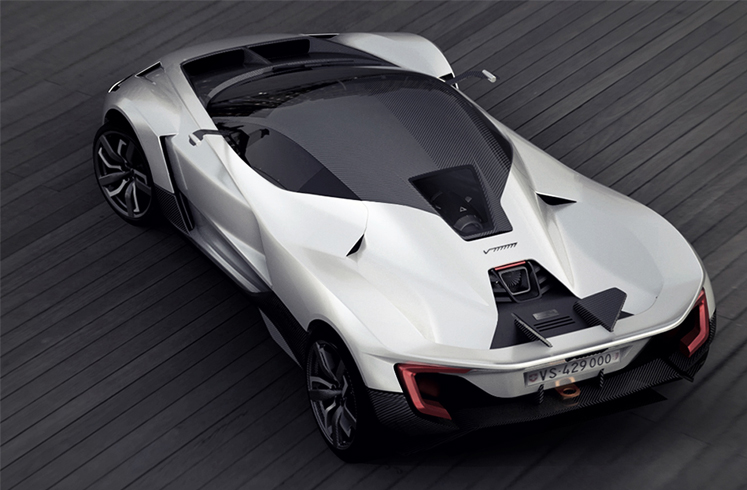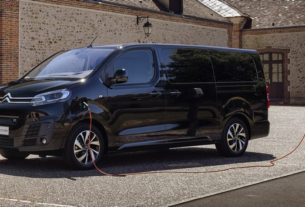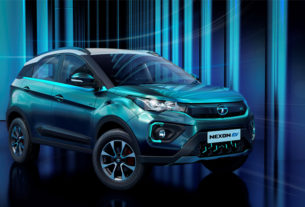The entire universe, including all matter, is a matrix of infinite electrical impulses. It’s only natural that all our transportation goes electric. Vazirani Automotive, manufacturer of India’s first electric hyper-car, aims to help the world make this transition seamless and fun, says Chief Designer and CEO Chunky Vazirani in an interview with Dhiyanesh Ravichandran

Could you brief us about your company and the newly established design studio? What are its founding principles, vision and business models?
Vazirani Automotive was founded in 2015 with the vision to create unique technology and driving experiences around electric mobility. Our first vehicle, ‘Shul’, which we unveiled at the Goodwood Festival of Speed UK in 2018, is nearing final production. Along the journey of designing a new vehicle platform from scratch we have developed technologies and design solutions that we are now sharing with companies around the world to help them build efficient vehicles.
What about the design and engineering capabilities for electric vehicles? Does car designing go hand-in-hand with engineering and EV technological developments?

Chunky Vazirani, Chief Designer and CEO, Vazirani Automotive
I am a designer myself with experience of working at Rolls-Royce, Jaguar, Land Rover and Volvo. I gathered the experience from these companies but always wanted to create products that are more aerodynamically efficient and easy to manufacture while showcasing radical technology. This design has an ethos that has also translated to ‘DiCo’, our proprietary battery pack design. The battery pack design is simple, inexpensive to produce and the scalable lightweight construction allows for ultimate flexibility for any use without compromising performance. Our advanced thermal management system results in 1.7x cooling efficiency of the cells, resulting in extremely high performance.
From a design point of view, how different are electric vehicles – electric performance cars in particular?

Visually, electric cars might seem similar to conventional vehicles, but the way they are packaged underneath is completely different. We believe that the cars of tomorrow have to be lightweight and aerodynamically efficient. These two factors are crucial to further increase the range of the electric vehicles and hence these remain our prime focus. Electric vehicles have fewer components compared to combustion vehicles, allowing designers and engineers to allot that volume to safety and comfort. The absence of a large vibrating combustion engine permits use of lighter yet stronger construction of the car and the presence of torque-rich electric motors makes the design of the drivetrain and axles very critical. The battery cooling system still remains a game-changer in any electric vehicle and it is exactly what we are optimising at Vazirani Automotive.
How are design preferences and sensibilities of Indian and Asian consumers different from that of the western markets? What sort of value-addition can your company provide to OEMs in this regard?

Every market and population demographic has its preferences. For example, India is one of the very few countries that do not shy away from bright colours. Perhaps it’s something that’s part of our culture. This is very different from Europe where bright coloured cars are only preferred by less than 6% of the buyers. There are many shapes and graphics preferences that seem to be more attractive that we have learned and explored.
Could you elaborate about Shul concept – design inspiration, styling features and aerodynamics? What is its business proposition?

Shul is India’s first electric hyper-car that will have more than a 1,000 hp. The car has a Formula 1-style carbon fibre monocoque chassis coupled with carbon fibre bodywork. This makes the car one of the lightest electric vehicles on the planet. We also drew upon our Indian heritage and beliefs to bring to life a new possibility for a modern supercar. We wanted to portray a different side of India that is lesser known but as much true – the calmer side that focuses on getting closer to your soul. We believe that automobiles can transport man, not only physically but also spiritually. Visually we took inspiration from Lord Shiva, who is an embodiment of universal soul.
The ‘trishul’ intakes on the sides of the car channel the air to cool the motors and inverters. The three LED headlight signatures are inspired from the three lines on Shiva’s forehead, known as ‘tripundra’. The trick was to keep them as thin as possible to channel air through the middle straight to the front brakes, which in a car like this gets way hotter than the rear. These are some of the details that are designed around the functions the car performs. It’s all about form following function. As a business we develop low-volume cars that are unique and that push the boundaries in some areas of performance. We share these learnings with other companies as products and services.

Why only hyper-cars? Is there any scope for other vehicle products and segments at your design studio?
Hyper-cars are the most extreme vehicles in terms of design and engineering as every area of the car has to be pushed to its limits when it comes to performance. It’s also proof of our technology, especially the battery design. If the design of our battery can deliver these high levels of performance then adopting this technology to busses and other consumer cars is easier. There is tons of scope for electric vehicles in other segments as well and we have some mobility solutions for such segments.
What are the engineering and technology-related services on offer? Who are your target customers and partners?
We have certain specialisations such as:
- Design: We can design and build complete prototypes for customers. We offer end-to-end design development services from concept development, Class-A surfacing to concept car builds.
- Engineering: Our internal engineering capabilities from battery pack design and manufacturing as well as electric vehicle or hybrid powertrain integration solutions allow us to build working prototypes for EVs. Our proprietary battery technology is specifically developed to be extremely efficient and modular, enabling us to plug and play and reduce time and recurring development costs.

We are currently working with a few international start-ups developing EVs. We are also working with an OEM that wants to understand the design preferences and sensibilities of the ‘Indian demographic deeply’ so that they can further enhance their global strategies. Our services and technology have found applications in cars and busses and soon we expect them to be adopted in aerial electric vehicles.
What are your strategic plans for the next couple of years? Is there anything specific to the Indian market?
Under the ‘Vazirani’ brand, we aspire to be a company rooted in India focused on making global products although we are working on an electric SUV for a start-up based in India. I cannot give any more details apart from that.





